June 11, 2024 by Heather
Introduction To Bladesmithing:
Although we are based in South Africa, we have strong ties with bladesmithing in the U.S.A. and have provided links to knife suppliers in most countries.
We will cover various topics in depth in a series of posts, and you can comment or ask us questions about how to get started in the art/craft of bladesmithing. There will be useful links to articles, videos, and quality suppliers. We are also available to answer your questions. “Heavin Knows!”
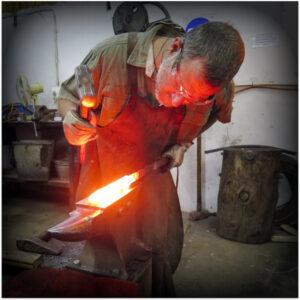
Getting started: An Introduction to Bladesmithing Solutions Website.
Bladesmithing Solutions is divided into bite-sized blog posts on different subjects aimed at helping beginner, intermediate, and experienced bladesmiths.
As an Amazon Associate I earn from qualifying purchases.
List of Knife-Related Suppliers in South Africa.

We believe that the most important way to start bladesmithing is to take a course with a recognised bladesmithing school or ABS instructor. After attending the course, you will know what tools and equipment you need, and you will not have picked up any bad habits! Our next recommendation is to join the American Bladesmith Society.
Starting bladesmithing involves more than shaping hot steel—it needs an understanding of material science principles, too. So, before diving into this craft headfirst, take some time to educate yourself about different types of steel and how heat treatment works.
Remember: The best blades aren’t made overnight. Careful design, planning and drawing are involved. They’re forged through careful selection of materials, meticulous attention to detail during the forging process, proper heat treatment techniques followed by grinding, correct edge geometry, polishing, ergonomic handle making and custom sheath making. Form follows function, balancing artistry with utility.
Whether you have only hand tools or a complete shop with modern bladesmithing equipment, we aim to help you create knives that will reflect your personality and become the antiques of the future!
This fascinating intersection between science and art makes bladesmithing a truly unique craft worth exploring! It is also a hobby that can make you money!
We will cover the following:
Revival of the Bladesmithing Craft: A Modern Take on a Timeless Tradition
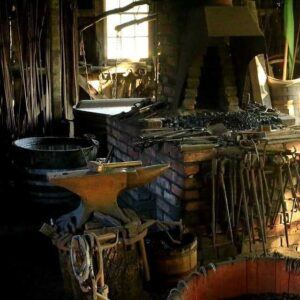
Bladesmithing, an age-old craft, is experiencing a renaissance. Whether inspired by history or the appeal of handcrafted goods, modern enthusiasts are diving into the art of forging blades. This guide will walk novice bladesmiths through the journey, from the foundational tools to the finishing touches, ensuring each blade is both a work of art and a functional tool.
Getting Started: A Guide for Novice Bladesmiths
Embarking on your bladesmithing journey requires the right knowledge and equipment. Begin with essential tools such as hammers, anvils, tongs, and forges. These form the backbone of your workshop and are crucial for shaping and heat-treating your blade.
Material Matters: Selecting the Right Steel
The choice of steel is paramount. High-carbon steels like 1095 or tool steels like O1 are popular choices due to their excellent edge retention and ease of heat treatment. Understanding the properties of different steels will help you choose the right material for your blade.
Designing Your Knife: Artistry Meets Utility
A successful knife design balances aesthetics and function. Consider the knife’s intended use, be it culinary, hunting, or everyday carry—and sketch designs that reflect both beauty and practicality. Attention to blade shape, handle ergonomics, and overall balance is key. Take a course on pencil sketching, it will improve your knife drawing and give you an eye for design.
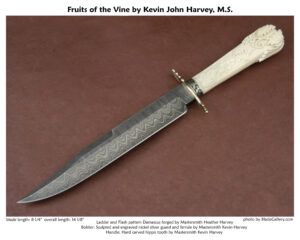
Mastering Blade Geometry: Shaping for Purpose
Blade geometry affects performance. Learn the nuances of different grinds—flat, hollow, convex—and how they impact cutting ability and durability. A well-shaped blade performs its intended task efficiently and withstands the test of time.
The Grinding Process: Techniques and Safety
Grinding shapes the blade and refines its edges. Use proper techniques to achieve the correct edge geometry. Safety protocols, such as wearing protective gear and maintaining a clean workspace, are essential to prevent accidents and ensure a quality finish.
Heat Treatment Essentials: Hardening and Tempering
Heat treatment starts the moment you begin forging your blade. Correct thermal cycling and heat treatment transform the steel’s properties. Hardening involves heating the blade to a specific temperature and then quenching it, while tempering reduces brittleness. Mastery of these processes is crucial for achieving the right balance of hardness and toughness.
Polishing and Finishing: A Professional Edge
Gradually progress through finer grits of sandpaper, polishing stones and finishing compounds to achieve either a satin finish or to reveal a “Hamon.” This meticulous process highlights the craftsmanship of your blade.
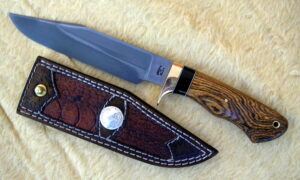
Crafting the Handle: Comfort and Control
A well-designed handle provides comfort and control. Choose suitable materials like wood, micarta, or synthetic composites that offer durability and aesthetic appeal. Shape the handle to fit comfortably in the hand, ensuring a secure, ergonomic grip during use.
Sheath Making: Protecting Your Blade
A custom sheath protects your knife and adds a personal touch. Leather, kydex, and other materials can be used to create a functional and unique sheath, providing a safe home for your blade when being carried.
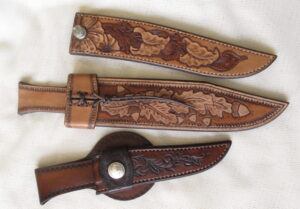
Maintenance and Care: Ensuring Longevity
Proper maintenance is vital for preserving your knife. Regularly clean and oil the blade to prevent rust, and periodically sharpen it to maintain its edge. Store the knife in a dry environment to avoid damage. There are blades in museums that have survived for over a thousand years; keep this in mind with every knife you make and educate the owner on how to care for it for future generations.
Bladesmithing with a Purpose
Whether the knife will be used in the kitchen, the hunting field, or every day by a ranchhand, ultimately, bladesmithing is about creating knives that stand the test of time and will proudly serve the owner. Each knife forged is a testament to the smith’s skill and dedication. Mastering the craft contributes to a tradition that values quality, functionality, and artistry. Share your knowledge and encourage youngsters to learn this ancient craft.



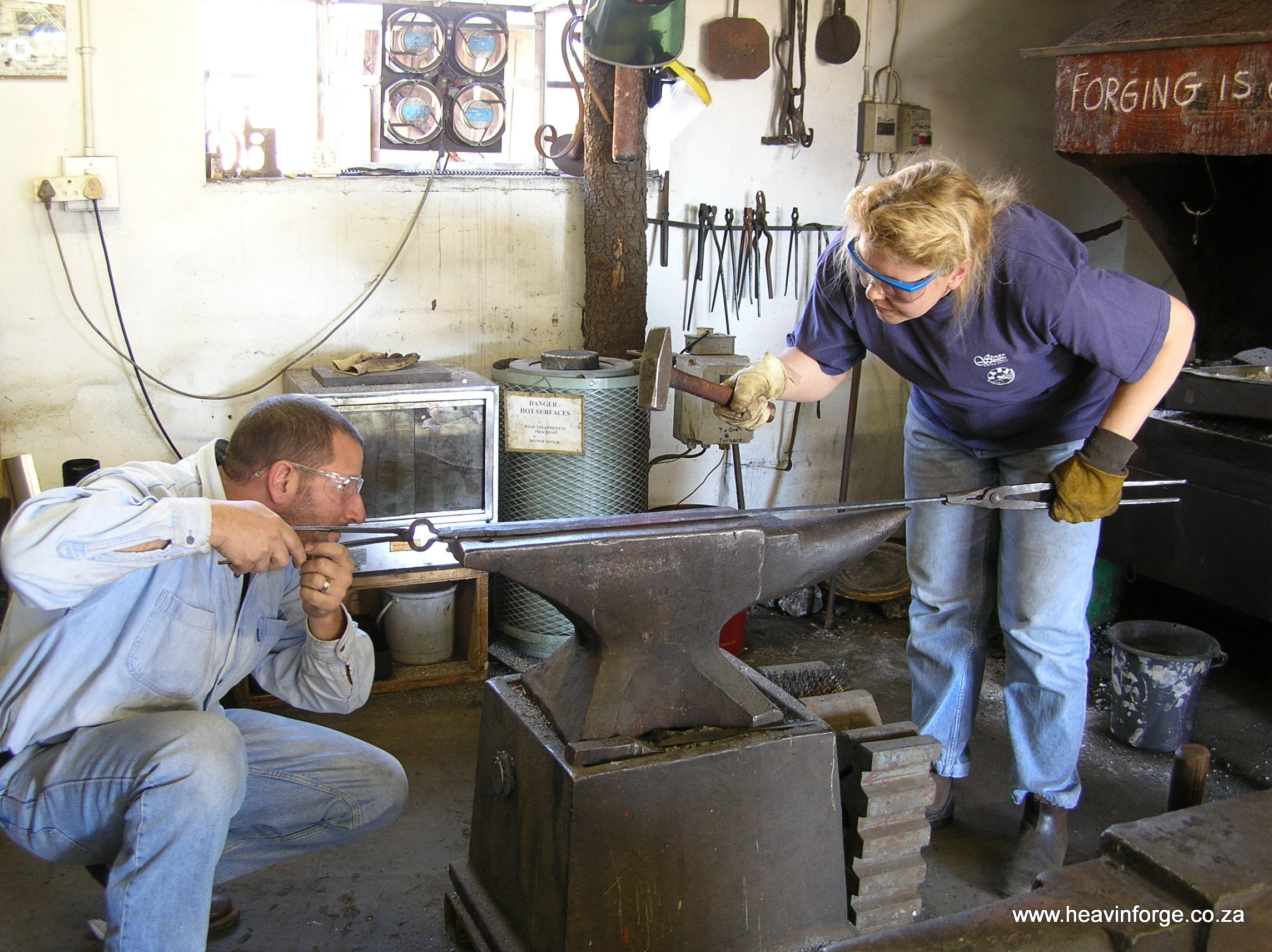
Leave a Reply